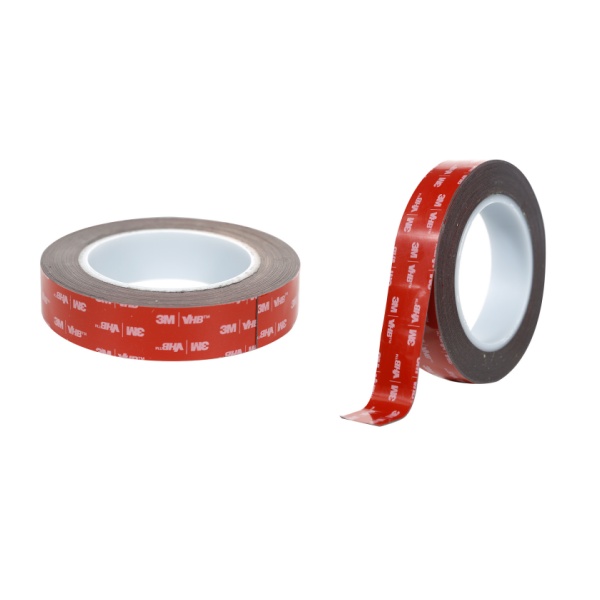1. Definition and Core Features of VHB
VHB (Very High Bond Tape) is a high-performance double-sided tape developed by 3M. It is designed to replace traditional mechanical fasteners such as screws and rivets. Its core features include:
-
Ultra-High Adhesion: Utilizes an acrylic adhesive to provide a permanent bond suitable for materials like metal, plastic, and glass.
-
Structural Support: Not only does the tape act as an adhesive layer, but it also helps distribute stress, enhancing overall structural strength and durability.
-
Extreme Environment Resistance: Certain models (such as the 3M VHB 9473PC) are engineered to withstand extreme temperatures, ranging from -40°F to +500°F.
2. Technical Breakthrough: Why Choose Ultra-High Bond Tape?
When engineers require a solution for permanent, screw-free fastening, this tape offers several distinct advantages:
-
Thickness-Performance Relationship: The tape’s thickness (ranging from 10 mil to 45 mil) directly influences its load-bearing capacity and vibration damping properties.
-
Material Diversity: It is available in various options, including transparent and colored foam backings (such as the 5925 and 4618 models), to meet different aesthetic and performance needs.
-
Streamlined Assembly Process: Using this tape eliminates the need for drilling or welding, significantly reducing assembly time and cost.
3. Typical Application Scenarios and Recommended Models
Automotive Manufacturing:
-
Commonly used for securing headlamps and interior components. For instance, the 3M VHB 5952 model, with its black foam backing, not only withstands high temperatures (up to +250°F) but also offers excellent structural support.
Electronics:
-
Often applied in screen bonding and sensor installation. The 3M VHB 9473PC model, with its transparent design, ensures that light transmission is not affected while providing a reliable bond.
4. Key Parameters for Selecting VHB Tape
When choosing VHB Tape, it is essential to consider the following key parameters to ensure it meets specific requirements:
-
Thickness: This directly determines the tape’s load capacity and vibration damping effectiveness. For example, a 10 mil thickness (as seen in the 9473PC model) is suitable for lighter loads, while a 45 mil thickness (like the 4941 model) is better for heavier applications.
-
Temperature Range: This parameter reflects the tape’s ability to perform under various environmental conditions. Some models are designed to function reliably within a temperature range of -40°F to +500°F.
5. Differentiation from Competitors
Compared to conventional double-sided tapes, this tape stands out with several unique advantages:
-
Zero Volatile Organic Compounds (VOC): Its environmentally friendly design meets strict industrial safety standards.
-
Long-Term Stability: It boasts excellent resistance to aging and ultraviolet exposure, ensuring a durable bond over time.
-
Design Flexibility: The tape can be easily cut into any shape to adapt to complex surfaces and diverse industrial structures.
Post time: Apr-01-2025
